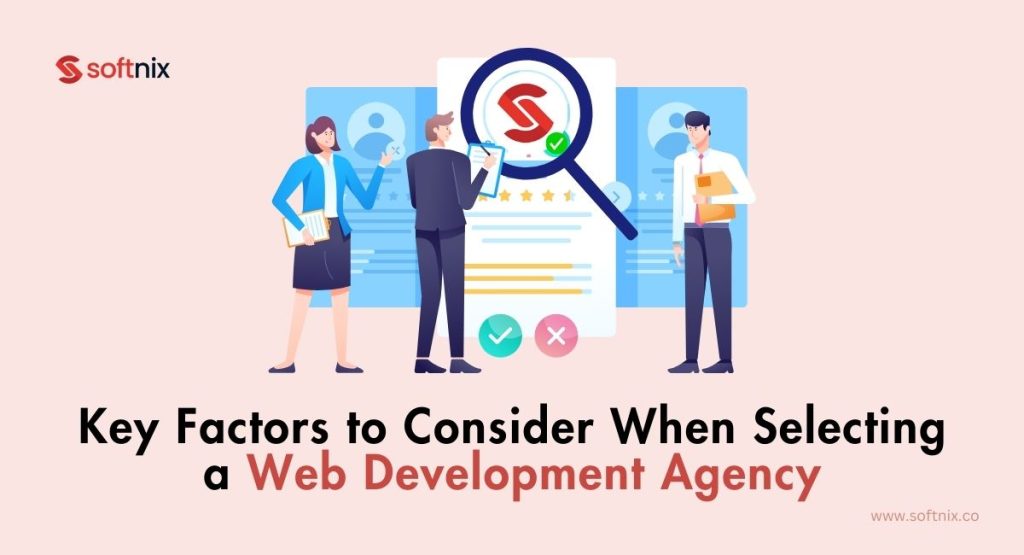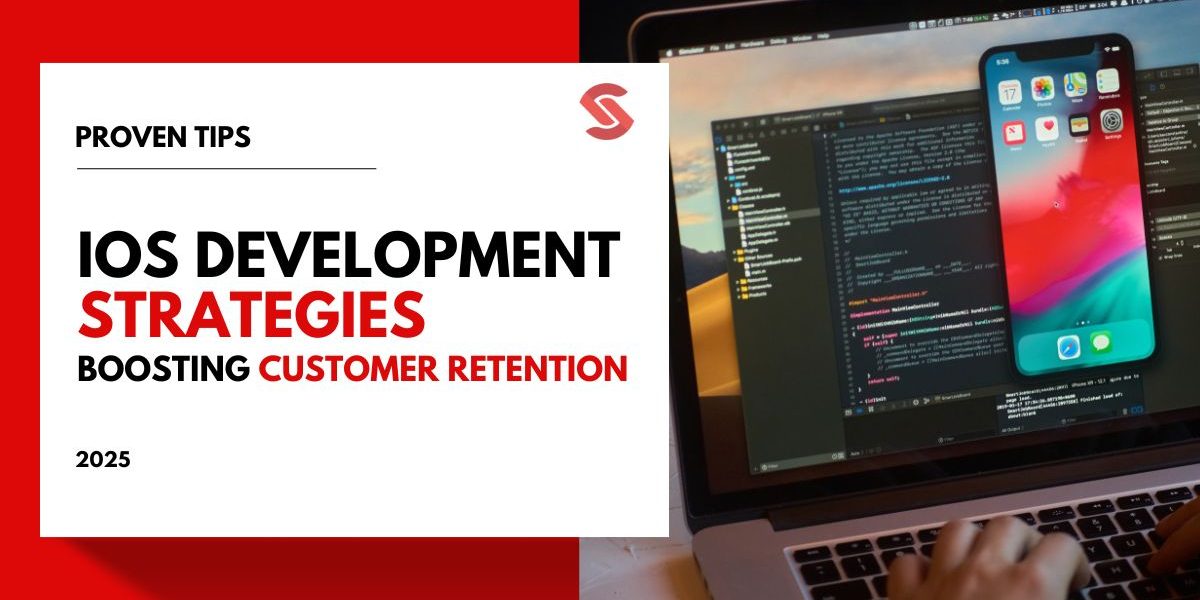“A website is no longer just an option; it’s necessary.” This statement rings true for businesses of all sizes in today’s market.
Are you struggling to find the right web development company to create your business website?
Your website is often the first impression potential customers have of your brand. If it doesn’t engage, inform, and convert visitors, you could be losing out on valuable business.
Today, where consumers turn to the internet for everything—from product research to customer reviews—having a strong online presence is essential.
A survey by Clutch found that 83% of small businesses believe having a website is crucial for their success. But with the global web development market expected to reach $394.6 billion by 2025, how do you navigate the crowded field of web development companies and choose the one that’s right for you?
This blog will guide you through the process of selecting a web development company that not only understands your business goals but also has the technical expertise to bring your vision to life.
Ready to make your website a powerful tool for success? Let’s get started!
Initial Considerations Before Hiring a Web Development Company

Before hiring a web development company, start by defining your business needs. Identify your objectives, for example, you need a website for lead generation or brand awareness. Know what features you need, like e-commerce capabilities or contact forms.
Next, plan your budget. Set a realistic budget and understand potential costs, including development and maintenance. This helps in avoiding unexpected expenses. Researching companies is vital.
Review their portfolios and client testimonials to gauge their work quality. Assess their technical skills, such as expertise in CMS and responsive design. Check their ability to boost conversion rates and user engagement.
By addressing these considerations, you ensure a smooth process and choose a company that meets your business goals and budget.
1. Business Objectives and Goals
Setting your business goals is key to developing your website. These goals shape how your site looks and works. Think about what you want to achieve, like boosting sales, getting customers more involved, or making your brand more visible. Each of these goals influences the web development services you’ll need.
Here’s how to set your objectives and goals:
- Identify Key Goals: What do you want to achieve? More sales? Better customer engagement? Greater brand visibility?
- Prioritize Needs: Rank your goals to focus on the most important ones first.
- Align with Web Development: Choose features and designs that support your goals, like e-commerce for sales growth or interactive elements for user engagement.
- Review and Adjust: Regularly check your progress and adjust your strategy.
By clearly defining your business goals, you can ensure your website helps you grow your market, boost online sales, and strengthen your digital presence.
2. Key Features to Include
When building your website, it’s important to focus on the essential features. Utilizing professional web development services can help ensure all these essential features are effectively implemented. Start with mobile responsiveness to ensure your site looks good on all devices.
SEO capabilities help your site get found on search engines. Custom integrations and API connections allow your site to work smoothly with other tools. E-commerce functionality is vital for online stores, and a user-friendly design makes it easy for visitors to navigate and use your site
3. Understanding Target Audience
Knowing your target audience is key to creating a great website. By analyzing demographics like age, gender, and location, you can implement strategies for custom web development that design a site to fit their needs. Understanding user behavior helps you see what features they like and how they use your site.
This audience analysis ensures the website experience is tailored to their preferences. As web development expert Jeff Zeldman says, “Content precedes design. Design in the absence of content is not design, its decoration.”
4. Design Preferences
Defining your design preferences helps your website match your brand identity. Think about color schemes, typography, and imagery. Using your brand colors and consistent fonts makes your site look professional and cohesive.
Visual elements, such as images and graphics, should reflect your brand’s style and message. Overall design aesthetics, including layout and spacing, play a key role in creating a pleasant user experience.
According to a study by Adobe, 38% of users stop engaging with a website if the content or layout is unattractive. Designing according to your brand ensures better user engagement and reinforces brand consistency across all platforms.
5. Technology Requirements
Identifying the technical requirements is key for your website. Choose a CMS like WordPress for easy content management. Use programming languages such as HTML, CSS, and JavaScript to build your site. Reliable hosting solutions, like cloud hosting, ensure better performance and uptime.
Integrate third-party tools for added functionality, such as payment gateways or marketing analytics. Selecting the right technologies not only makes your website efficient but also scalable as your business grows. This approach helps in maintaining a smooth user experience and supports your long-term digital strategy.
6. Scalability Considerations
Ensure your website can grow with your business. Scalability is important for handling increased traffic, expanding features, and maintaining the site long-term. Use scalable architecture and server solutions to manage more visitors. The modular design helps in adding new features easily.
Load balancing ensures smooth performance during traffic spikes. Regular maintenance planning keeps your site updated and secure. Scalable website solutions are key to supporting business growth and ensuring a seamless user experience.
7. SEO Requirements
To ensure your website ranks well in search engines, focus on specific SEO needs. Implementing these strategies helps improve visibility and attract more visitors.
Consider these key SEO requirements:
- On-page SEO: Use keyword optimization, meta tags, and proper headings.
- Technical SEO: Ensure site speed, mobile-friendliness, and clean URLs.
- Content Strategy: Create valuable content that engages users and includes relevant keywords.
- Link Building: Develop a strong backlink strategy to boost authority.
Following these SEO best practices ensures your business website stays competitive, attracts more traffic, and supports long-term growth. Regularly updating and optimizing your SEO strategy keeps your site aligned with search engine algorithms.
8. Budget Constraints
Setting a realistic budget is vital for your web development project. Consider all costs, including development, maintenance, and future updates. Planning your budget helps avoid financial surprises. Think about the cost of hiring developers, purchasing tools, and ongoing expenses. Include a buffer for unexpected costs to stay on track.
9. Timeline Expectations
Establishing a clear timeline for your web development project is essential. Set realistic deadlines and milestones to track progress. Timely delivery of each phase ensures the project stays on schedule. Break the project into manageable parts and assign deadlines to each. Regularly review progress to make sure everything is on track. Effective timeline management helps meet goals and keeps the project moving forward without delays.
10. Compliance and Security
Ensuring your website complies with legal standards and remains secure is critical. Focus on data protection, privacy policies, and secure coding practices. Compliance with regulations like GDPR is necessary for handling user data. Use SSL certificates and data encryption to protect information. As cyber security expert Bruce Schneier says, “Security is not a product, but a process.” Regularly update security protocols to safeguard your website and maintain user trust.
Key Factors to Consider When Selecting a Web Development Agency

When choosing a web development agency, consider their expertise and experience in your industry. Check their technical skills in CMS, custom development, and UX/UI design. Review their portfolio for quality and success stories.
Client testimonials and industry recognition show reliability and trustworthiness. Ensure clear communication and collaboration methods, like agile or waterfall. Finally, evaluate their pricing structure, value-added services, and potential ROI to ensure the best value for your investment.
1. Evaluating the Agency’s Relevant Portfolio
Reviewing an agency’s portfolio is one of the essential steps for website development as it helps assess its design quality and innovation. Look for relevance to your project needs and creative examples. Check visual portfolios and case studies to see their past work.
Focus on design samples that showcase their skills and ability to handle projects like yours. This ensures they can deliver the results you want for your website.
2. Analyzing Client Reviews and Testimonials
Client reviews and testimonials give insights into an agency’s reliability and work quality. Look for feedback on their communication, technical skills, and project outcomes. Positive reviews and repeat business are signs of a trustworthy agency.
- Reviews on the Agency’s Site: Check client reviews on the agency’s website for authenticity and relevance. Look for specific feedback examples that highlight client satisfaction and successful projects.
- Feedback on Review Platforms: Third-party review sites like Google, Yelp, and Clutch offer unbiased opinions. Interpret these reviews for overall client satisfaction and agency performance. According to expert Brian Solis, “Unbiased reviews on trusted platforms help gauge an agency’s real reputation.”
- Comments and Ratings on Social Media: Analyze the agency’s social media comments and ratings to understand customer interactions and community engagement.
- Discussions on Relevant Forums: Forums like Reddit and Quora provide community opinions and in-depth discussions. Use these platforms for research and insights.
- Word-of-Mouth Recommendations: Gather personal recommendations from trusted sources and networking events. Validate this feedback by comparing multiple opinions to ensure reliability.
- Direct Client References: Speak directly with previous clients to get honest feedback. Ask about their experience, project success, and any challenges faced.
3. Assessing Technological Expertise
Evaluating an agency’s tech skills is vital. Check their knowledge of CMS, custom development, and responsive design. Look for experience with modern web technologies and innovative solutions.
- Proficiency in Web Development Frameworks: Expertise in frameworks like Angular, React, and Vue impacts project success by enabling efficient, modern web development. These JavaScript frameworks offer robust, scalable solutions for front-end development.
- Expertise in Various Programming Languages: Knowledge of HTML, CSS, JavaScript, PHP, and Python is crucial for diverse project needs. Each language offers unique benefits, from front-end design to back-end functionality, ensuring comprehensive development.
- Experience with CMS: Content Management Systems expertise in platforms like WordPress, Drupal, and Joomla aids in managing and updating websites efficiently.
- Capabilities in E-Commerce Platforms: Expertise in e-commerce platforms like Shopify, Magento, and WooCommerce supports online sales and business growth.
- Skills in Database Management: Proficiency in database management systems like MySQL, MongoDB, and PostgreSQL is vital for handling large datasets and ensuring data integrity.
4. Evaluating Communication and Transparency
Assessing communication and transparency ensures smooth collaboration. Check for regular updates, clear expectations, and responsive support. Effective communication helps avoid misunderstandings and keeps the project on track.
- Use of Project Management Tools: Using project management tools like Jira, Trello, and Asana helps track progress and ensure transparency. These tools organize tasks, manage timelines, and facilitate team collaboration effectively.
- Frequency and Quality of Regular Updates: Regular updates and clear communication keep clients informed and engaged. Frequent progress reports and quality updates help build trust.
- Adoption of a Feedback-Driven Culture: A feedback-driven culture enhances project outcomes and client satisfaction. Regular feedback loops ensure continuous improvement.
- Adherence to Clear Documentation Protocols: Clear documentation aids in project transparency and future maintenance. Comprehensive records provide a reference for any future updates.
- Effectiveness of Communication Platforms: Using effective communication platforms like Slack, Zoom, and email facilitates clear and timely communication. These tools ensure everyone stays connected, promoting efficient collaboration.
5. Ensuring Budget Alignment and Contract Terms
Aligning the budget and contract terms ensures smooth project execution. Discuss clear cost estimates, payment schedules, and deliverables. This transparency helps avoid surprises and keeps the project within financial limits.
- Understanding Pricing Models: Different pricing models for web development include fixed-price, hourly rate, and milestone-based. These models help in cost estimation and budget planning, ensuring financial alignment with project goals.
- Contract Essentials: Key elements in a web development contract include the scope of work, timelines, payment terms, and intellectual property rights. Clear contract drafting ensures smooth project execution and protects both parties’ interests.
6. Determining Cultural Fit and Compatibility
Assessing the cultural fit between your company and the web development agency is key. Look for shared values, work ethics, and compatible communication styles. This alignment ensures smooth collaboration and a positive working relationship. Compatibility in company culture and ethical standards helps achieve project goals effectively and fosters a productive partnership.
7. Evaluating Support and Maintenance Services
Ongoing support and maintenance services are crucial post-launch. Check for comprehensive maintenance plans, troubleshooting, regular updates, and clear service level agreements (SLAs).
Effective support services ensure your website runs smoothly and stays updated. This includes issue resolution, software updates, and reliable SLAs to maintain optimal performance and user satisfaction.
Conclusion
By now, you should have a clear understanding of how to select the right web development firm. Still unsure where to start?
Softnix is here to assist you in creating your dream web application or website. With over 12 years of experience and over 60 successful projects, our expertise in web development is unmatched.
Connect with our experts today and take the first step towards bringing your vision to life.
FAQs about Choosing the Right Web Development Partner
What factors should I consider when choosing a web development firm?
When choosing a web development firm, consider their expertise, experience, portfolio, client testimonials, and communication style. It’s also important to evaluate their understanding of your business needs, technical skills, and ability to deliver within your budget and timeline.
Why is it important to review a web development firm’s portfolio?
Reviewing a web development firm’s portfolio helps you assess their design quality, creativity, and relevance to your project. It gives you insight into their past work, their ability to meet client goals, and their experience with projects similar to yours.
How do I assess a web development firm’s technical expertise?
To assess a firm’s technical expertise, look at its experience with various programming languages, CMS platforms, and web development frameworks. Check for proficiency in HTML, CSS, JavaScript, and other relevant technologies. You can also request case studies or examples of their technical work.
What should I look for in client testimonials and reviews?
Client testimonials and reviews provide valuable insights into a firm’s reliability, quality of work, and customer service. Look for feedback on project outcomes, communication, timeliness, and overall client satisfaction. Positive reviews and repeat clients are strong indicators of a reputable firm.
Why are communication and transparency important in web development projects?
Effective communication and transparency ensure that all stakeholders are on the same page, reducing misunderstandings and delays. Regular updates and clear communication help manage expectations, address issues promptly, and keep the project on track.
What are the benefits of using project management tools in web development?
Project management tools like Jira, Trello, and Asana help track progress, manage tasks, and ensure transparency. They facilitate collaboration, keep everyone informed, and streamline workflows, making it easier to meet deadlines and deliver high-quality results.
How often should I expect updates from my web development firm?
The frequency of updates depends on the project’s scope and complexity. Typically, you should expect weekly or bi-weekly updates. Regular progress reports and meetings help keep you informed, address any concerns, and ensure the project stays on schedule.
What is the importance of a feedback-driven culture in web development?
A feedback-driven culture encourages continuous improvement and client satisfaction. Regular feedback loops help identify and address issues early, refine the development process, and ensure the final product meets or exceeds client expectations.
Why is clear documentation crucial in web development?
Clear documentation ensures project transparency and aids future maintenance. Comprehensive records of development processes, code, and project specifications help developers understand and update the website efficiently, reducing downtime and errors.
What are the common pricing models used by web development firms?
Common pricing models include fixed-price, hourly rate, and milestone-based. Fixed-price projects have a set budget, hourly rate projects charge for actual time spent, and milestone-based projects involve payments at specific stages. Each model has its advantages depending on the project scope and flexibility.
What should be included in a web development contract?
A web development contract should include the scope of work, timelines, payment terms, and intellectual property rights. It should clearly define responsibilities, deliverables, and any additional services. This helps avoid misunderstandings and ensures both parties are aligned.
How do I determine if a web development firm is a cultural fit?
Determine cultural fit by assessing shared values, work ethics, and communication styles. A firm that aligns with your company culture will collaborate more effectively, understand your vision better, and contribute positively to the project’s success.
What kind of support and maintenance services should I expect post-launch?
Post-launch, you should expect ongoing support and maintenance services, including troubleshooting, regular updates, and performance monitoring. Service level agreements (SLAs) should outline response times and the scope of support to ensure your website remains secure and functional.
How do I ensure budget alignment with a web development firm?
Ensure budget alignment by discussing clear cost estimates, payment schedules, and potential additional expenses upfront. Regular budget reviews and open communication help manage financial expectations and avoid surprises during the project.
Why is evaluating service level agreements (SLAs) important?
Evaluating SLAs is important because they define the expected level of service, including response times, issue resolution, and support availability. A well-defined SLA ensures that you receive consistent and reliable support, protecting your investment and ensuring website performance.





